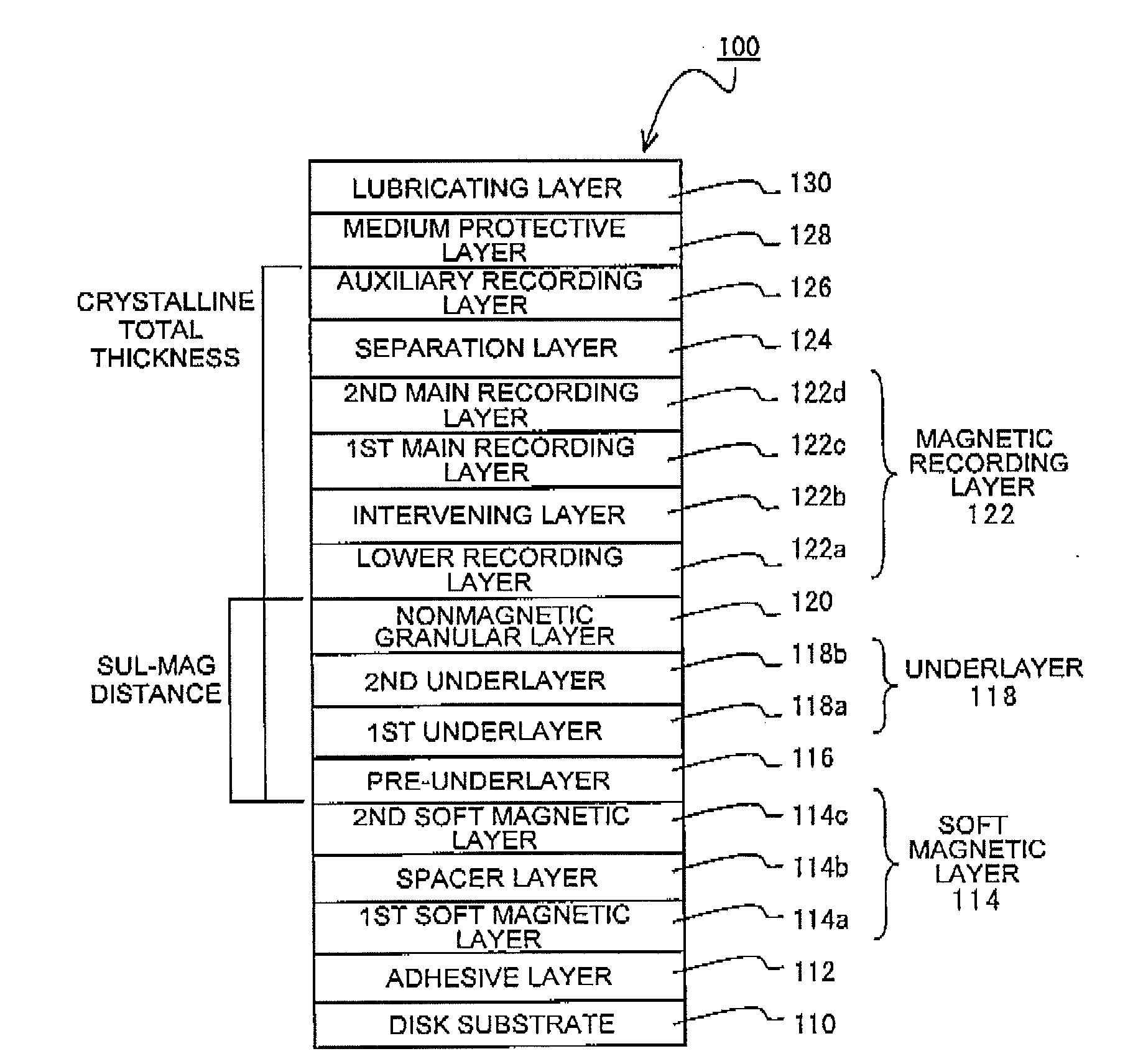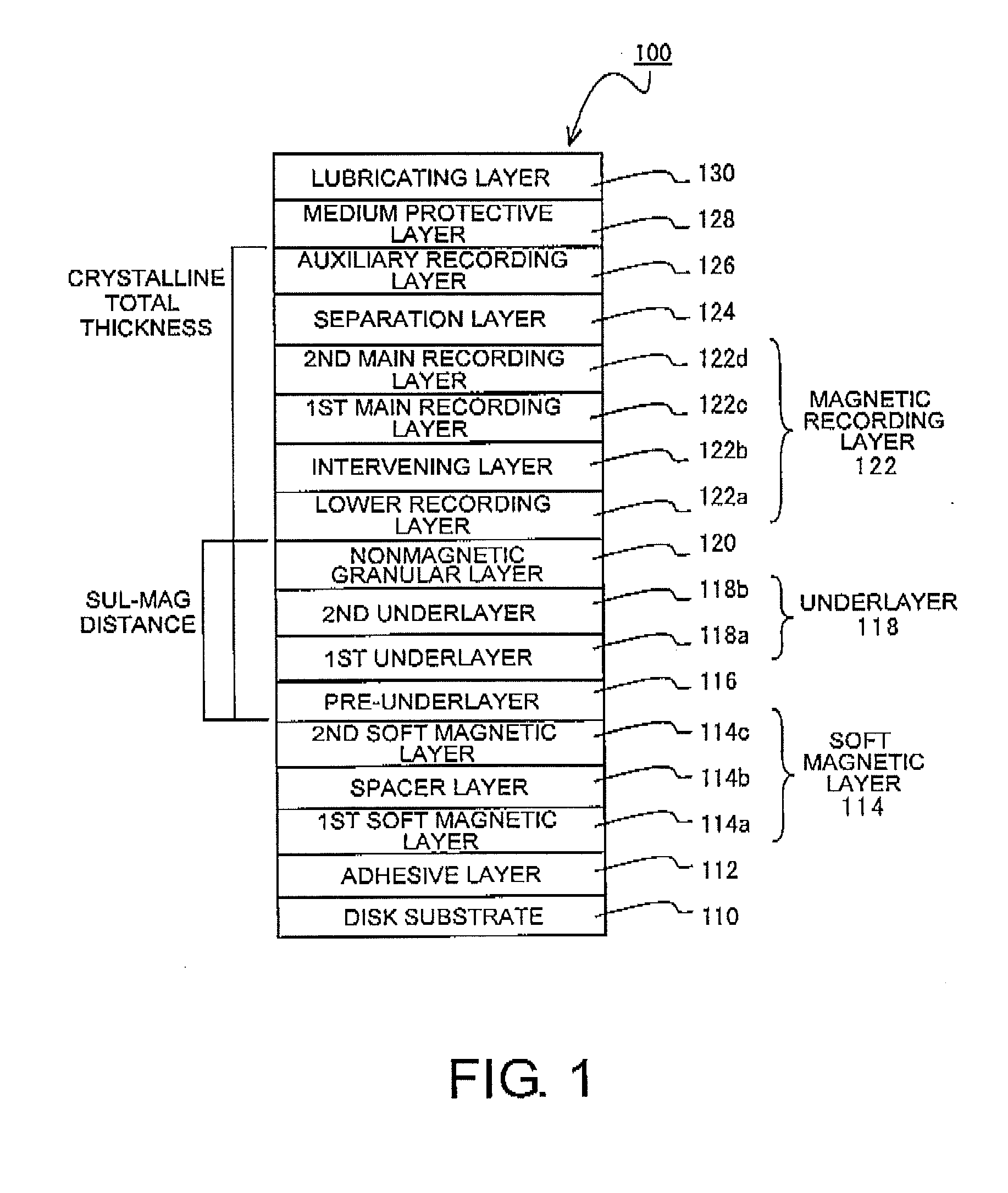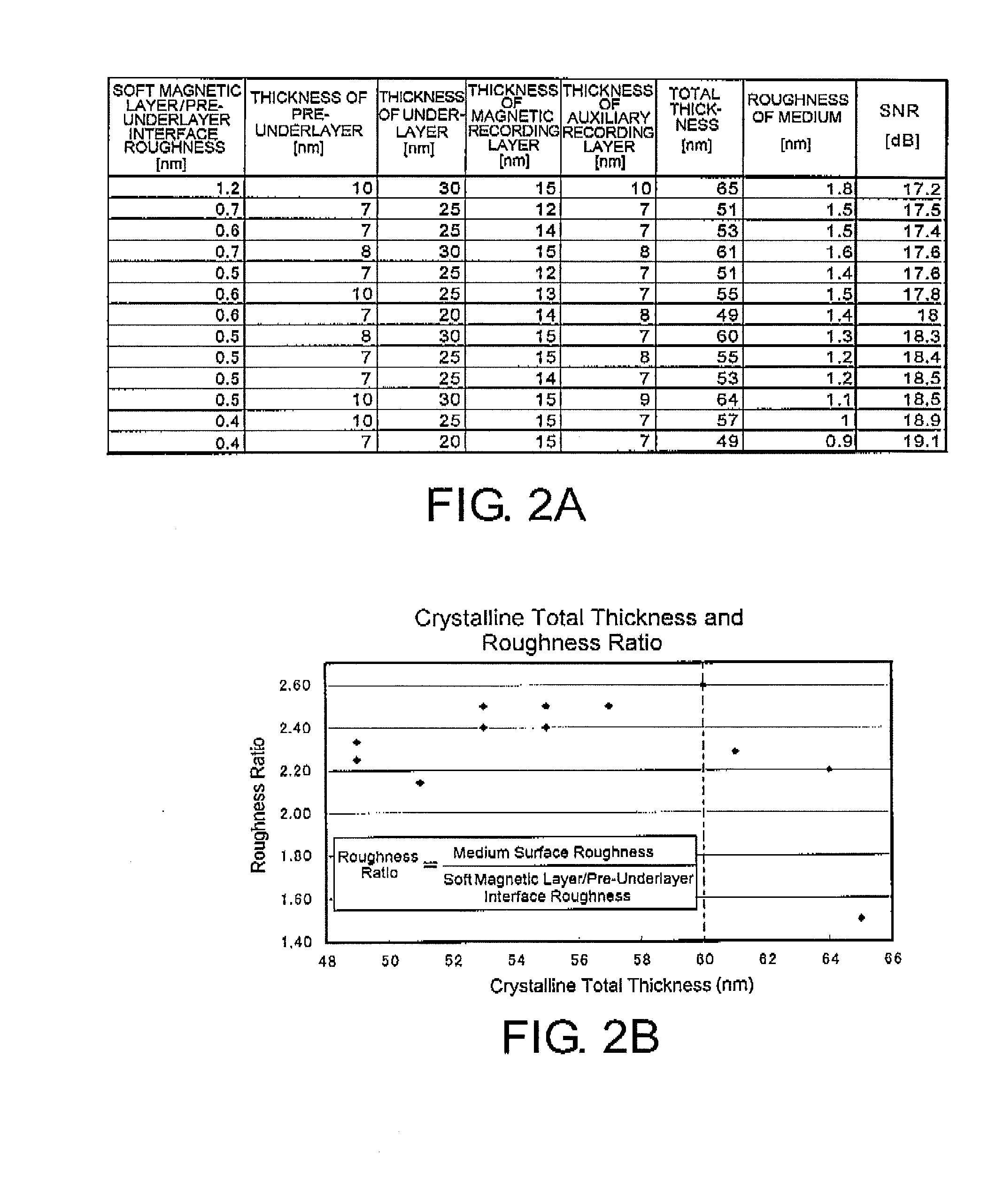Perpendicular magnetic recording medium
a magnetic recording medium and perpendicular technology, applied in the field of perpendicular magnetic recording medium, can solve the problems of reducing snr, reducing snr, and prone to head crash or thermal asperity failure, so as to increase the recording density, and reduce the surface roughness
- Summary
- Abstract
- Description
- Claims
- Application Information
AI Technical Summary
Benefits of technology
Problems solved by technology
Method used
Image
Examples
embodiment
Perpendicular Magnetic Recording Medium
[0038]FIG. 1 is a diagram for explaining the structure of a perpendicular magnetic recording medium 100 according to this embodiment. The perpendicular magnetic recording medium 100 shown in FIG. 1 comprises a disk substrate 110, an adhesive layer 112, a first soft magnetic layer 114a, a spacer layer 114b, a second soft magnetic layer 114c, a pre-underlayer 116, a first underlayer 118a, a second underlayer 118b, a nonmagnetic granular layer 120, a lower recording layer 122a, an intervening layer 122b, a first main recording layer 122c, a second main recording layer 122d, a separation layer 124, an auxiliary recording layer 126, a medium protective layer 128, and a lubricating layer 130. The first soft magnetic layer 114a, the spacer layer 114b, and the second soft magnetic layer 114c cooperatively form a soft magnetic layer 114. The first underlayer 118a and the second underlayer 118b cooperatively form an underlayer 118. The lower recording la...
example
[0082]Using an evacuated film forming apparatus, the layers from the adhesive layer 112 to the auxiliary recording layer 126 were formed in sequence on the disk substrate 110 in an Ar atmosphere by a DC magnetron sputtering method. The composition of the adhesive layer 112 was CrTi. In the soft magnetic layer 114, the composition of the first soft magnetic layer 114a and the second soft magnetic layer 114c was CoFeTaZr and the composition of the spacer layer 114b was Ru. The composition of the pre-underlayer 116 was NiW. As the first underlayer 118a, a Ru film was formed in an Ar atmosphere at a predetermined pressure (low pressure: e.g. 0.6 Pa to 0.7 Pa). As the second underlayer 118b, a Ru (RuO) film containing oxygen was formed, using a target containing oxygen, in an Ar atmosphere at a pressure (high pressure: e.g. 4.5 Pa to 7 Pa) higher than the predetermined pressure. The composition of the nonmagnetic granular layer 120 was nonmagnetic CoCr—SiO2. In the lower recording layer ...
PUM
 Login to View More
Login to View More Abstract
Description
Claims
Application Information
 Login to View More
Login to View More - R&D
- Intellectual Property
- Life Sciences
- Materials
- Tech Scout
- Unparalleled Data Quality
- Higher Quality Content
- 60% Fewer Hallucinations
Browse by: Latest US Patents, China's latest patents, Technical Efficacy Thesaurus, Application Domain, Technology Topic, Popular Technical Reports.
© 2025 PatSnap. All rights reserved.Legal|Privacy policy|Modern Slavery Act Transparency Statement|Sitemap|About US| Contact US: help@patsnap.com



